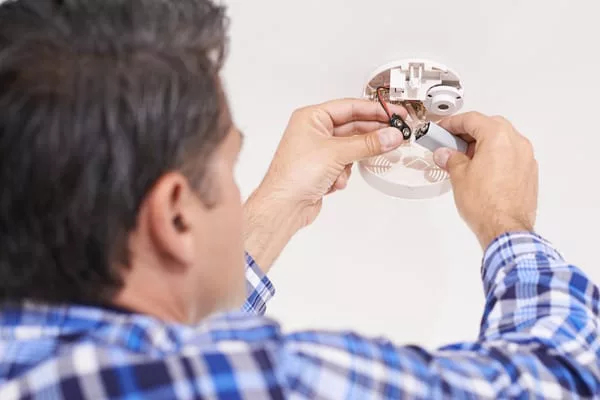
Nowadays, digital clocks tend to automatically reset when daylight saving time ends every year, making the task easier.
But one facet of the time change that isn’t automatic is that smoke and carbon monoxide detector batteries still need to be changed at some point, regardless of what type of detector you have. Safety groups have long suggested people to change the batteries on these devices during time changes to easily remember when to change the batteries. But if you forgot to do it when we had to “spring forward” on March 10, don’t worry, there’s still time!
According to the National Fire Protection Association (NFPA), the risk of dying in reported home structure fires is 55% lower in homes with working smoke alarms. According to 2014-18 data, about 41% of all home fire deaths were in properties without a working alarm. An additional 16% were in homes where the alarms did not properly sound. As of 2021, the Federal Emergency Management Agency (FEMA) estimated that 2,840 Americans died as a result of house fires. FEMA estimates there were 353,500 house fires in the U.S. in 2021.
Because working smoke alarms are such a critical element of home fire safety, NFPA supports any and all efforts to reinforce the importance of working batteries. However, today’s smoke alarms are not all designed the same, making the situation a bit more complicated.
The following is information from NFPA to help make sure all smoke alarms have working batteries, accounting for the multiple types of smoke alarms on the market and their varying battery requirements:
- Smoke alarms with non-replaceable 10-year batteries are designed to remain effective for up to 10 years. If the alarm chirps, warning that the battery is low, replace the entire smoke alarm right away.
- Smoke alarms with any other type of battery need a new battery at least once a year. If that alarm chirps, warning the battery is low, replace the battery right away.
- When replacing a battery, follow manufacturer’s list of batteries on the back of the alarm or manufacturer’s instructions. Manufacturer’s instructions are specific to the batteries (brand and model) that must be used. The smoke alarm may not work properly if a different kind of battery is used.
The NFPA has a wealth of information on their website, including helping to decide what kind of smoke alarm is right for you, how to troubleshoot your smoke alarm, smoke alarms for the hearing impaired, and more! Check out nfpa.org for more information that could save your life and the lives of your loved ones.
—
Photo Credit: SpeedKingz / Shutterstock.com




